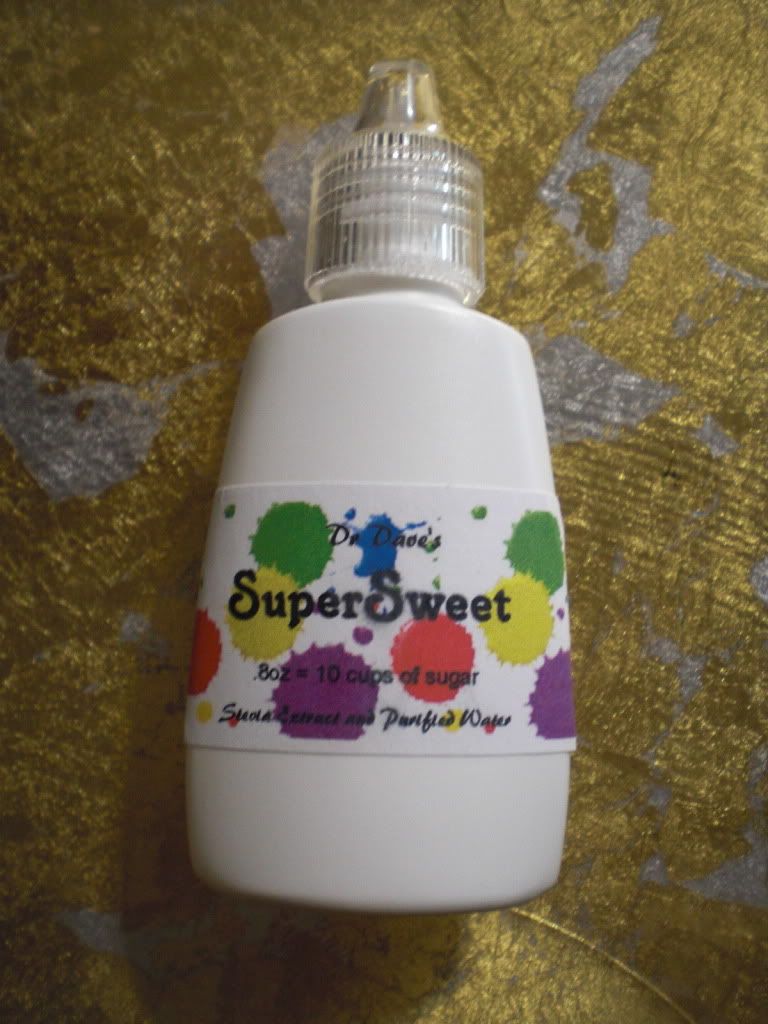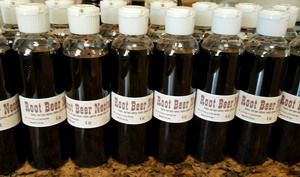| Welcome |
|
Aug 31, 2016
Safer Starch
Hi ,

Starches are problematic for the majority of people, but they are still the major food source for those same people. This planet could not sustain its current population if we were to all turn Paleo and eat a diet based primarily on meat. While this may be a good health choice for some
people, it is not realistic for most people. But the Standard American Diet of simple carbs, sugar, and vegetable oils is killing us faster and faster each year. What can we do?
One answer to this challenge is to make our starch consumption safer. The Food and Drug Administration tried to make a tiny move in this direction a few years back by recommending whole grains instead of highly processed grains. The idea was that whole grains had more fiber, and fiber slows down digestion. This is valuable because one of the biggest problems with starches is how quickly they turn into sugar and get absorbed into the blood stream. Sugar is toxic
in large quantities to our body, just like gas would be damaging to a car engine if it were poured over the engine instead of only tiny bits being metered into the piston chambers in just the right amounts. Sugar burns. In tiny controlled amounts that burn is used to drive the chemical reactions that produce life. Too much burn destroys our body tissues.

Slowing down how fast starch is broken down into sugar is one major way to make starches safer. Fiber helps a tiny bit, but whole grains have their own problems. The part of the grain that contains the fiber is also the part that contains the poisons the plants manufacture to protect the seeds (grains) from mold and insects. These poisons are also damaging to us. The seed oils are also usually in this outer part of the grain. When very fresh, these are
quite healthful. But our grains are stored for long times before being used, and those oils go rancid quickly. We end up getting our whole grains loaded with rancid oils, which are toxic.
I remember when I was young that I never liked homemade whole grain bread. It always tasted bitter to me. Then I started buying my whole wheat grain fresh from Deaf Smith county farmers. I would grind it in my VitaMix and turn it into bread dough within minutes of it being ground. This was a completely different tasting bread – naturally sweet without that rancid bitter aftertaste. Since then I have always told patients not to buy whole wheat flour
for baking, because it contains those toxic rancid oils. If you can’t buy and grind your own fresh grain, then buy the unbleached organic flour to make bread with.

What else can we do to slow down starch digestion to limit blood sugar overload? Starchy foods have many different kinds of starches in them, and some of those starches change when you cook them. Foods like potatoes and rice have two main types of starch in them – amylopectin and amylose. Amylopectins are huge molecules of up to 100,000 sugar molecules hooked together in a lacy, branched fashion, and they break down to individual sugar molecules very easily.
Amylose on the other hand is much smaller and not branched. Like strands of straw in a broom, amylose is stiffer, denser, and harder for the digestion enzymes to break down. The higher the percentage of amylose in a food, the lower its glycemic index and the less of a toxic sugar burden it is on the body. For example, long grain and Basmati rice are high in amylose and better for you compared to short grain sticky rice or jasmine rice. Which rice you eat makes a big
difference in your blood sugar levels.
How a starch is cooked and stored also greatly affects how quickly it turns into sugar in your gut. When you boil a starch, the water attaches to the amylopectin making it jelly-like. This is called gelatinization. This makes it very easy for the starch eating enzymes in our mouth and gut to get in and break up the starch into sugar. Microwaving starches has a similar effect. In general the more moisture there is in the starchy food, the easier it is to
digest and turn to sugar.

How long you cook a starch will impact the amount of gelatinization that takes place. For instance, cooking pasta al dente – 6 minutes – is better than cooking until the pasta is soft – 10 to 15 minutes – because of less gelatinization. In general, the chewier the starchy food is, the better it is going to be for you. A chewy tortilla is better than a porridge or wet cereal. Even within the wet cereal category, chewier steel cut oats are
better than soft rolled oats. Dry roasting your rice in the skillet or frying with butter or oil before adding the cooking water helps block the water soaking into the rice and makes it chewier. This is done for us when we buy parboiled or instant rice like Uncle Ben’s rice.
A corn tortilla is much better than puffed corn for another reason. The more air there is around the starch molecules, the more exposed surface area there is for enzymes to attach and tear down the starch into sugar. Popcorn and rice cakes are about the worst food possible. The sugar load for them is heavier than eating straight spoonfuls of sugar. This tidbit is always amazing to all my patients that think they are doing something good for themselves when the
eat popcorn for a snack. It is not a good snack. It spikes your blood sugar big time.

Another helpful health trick is to chill the starchy food before eating it. The cooking gelatinizes the starch to some degree. But refrigerating the food for 24 hours allows it to reform some of its structure, thereby decreasing how easily digested it is. So potatoes or pasta made into salad and chilled for a day will have a much lower glycemic index – meaning less damaging to the body. Even chilling bread will lower its index. Fresh and hot out of
the oven or pan turns starches to sugar super fast – think hot muffins, pancakes, pizza, and the like. Cold pizza is much better for you than hot and fresh. Even if you warm it up a bit after it has been cold it will still be better.
Anything that removes the water from a starch will improve its impact on your health. Dry toast is better than fresh bread, so croutons on your salad are better for you than the fresh hot bread.

Choosing starches that naturally have higher amylose than amylopectin in them will help your blood sugar immensely. Legumes are much higher than grains by almost twice as much. Green bananas are much higher in starch that digests slowly than ripe speckled bananas. Ripening pre-digests the food with the plant enzymes making it easier for you to finish the process.
Another way to slow down starch digestion to a manageable level is to add acid to the starch. Acid? A good example is dipping your French bread into the oil and Balsamic vinegar. The acetic acid in the vinegar slows down the starch digestion. Likewise sourdough bread is better than sweet bread because of the lactic acid in the sour dough. Adding fermented vegetables onto your bread has a similar effect. Having good stomach acid production is probably
the most basic protection for our blood sugar, and most of us have compromised stomach acid production. A huge sign of this is all the acid reflux we have in our culture. Acid reflux is a sure sign of low stomach acid production – usually from stress and low zinc levels.

A technique I learned while still in school was to combine the starch with protein while or before eating. Protein digests in the stomach while starch starts digesting in the mouth and then finishes in the duodenum below the stomach. By eating protein first, the valve at the bottom of the stomach closes to keep the protein food in the stomach for a couple hours while the stomach acids work on breaking down the protein. Starch eaten after or with the protein will be
trapped in the stomach and not be able to quickly dump into the small intestine and be absorbed into the blood stream. Instead it is slowly leaked into the duodenum with the protein. Many cultures intuitively have understood this and timed their meals to start with a tray of meats and vegetables – the antipasto tray. Also dessert is traditionally eaten at the end of the meal after the stomach already has its main protein dish onboard. These food timing tricks slow
the rate at which starch enters your system.
So what have we got so far to make our starches safer?
Choose high amylose varieties of starch
Cook them less.
Dry them out.
Cool them down.
Make them chewy.
Add acid to them.
Time them after proteins.
Is there anything left? Yes, the most obvious one of all – eat less. You can do all the right things to the starch to make it safer, but if the amount you eat is too much you neutralize everything you have done. Eating a pound of  pasta cooked al dente as a cold pasta salad is still
going to be worse than eating the crappiest plate of hot pasta with only four ounces of pasta on it. The total load of starch we eat is simply too high. You could eat 40 Lifesaver hard candies over the course of a day and have minimal blood sugar impact if that was all you ate that day. That would only be 600 total calories for the day, which your body would totally burn up just fine. I don’t recommend this as you are getting virtually zero nutrition, but it
demonstrates that the total calorie load during the day plays a huge part in the blood sugar control story. So we have to add one more safety tip to the list: pasta cooked al dente as a cold pasta salad is still
going to be worse than eating the crappiest plate of hot pasta with only four ounces of pasta on it. The total load of starch we eat is simply too high. You could eat 40 Lifesaver hard candies over the course of a day and have minimal blood sugar impact if that was all you ate that day. That would only be 600 total calories for the day, which your body would totally burn up just fine. I don’t recommend this as you are getting virtually zero nutrition, but it
demonstrates that the total calorie load during the day plays a huge part in the blood sugar control story. So we have to add one more safety tip to the list:
Eat less.
So there you have it, how to make your diet safer without actually having to stop eating the starches you love – just change how you eat them.
Take care,
David
Safer Starch Recipe: Protein Oats
Use Scottish stone ground oats or Irish steel cut oats. Put water in the pan just as the directions say. Add 1 packet of Knox gelatin per serving of oatmeal being made and mix in before heating the water. Then cook just as the instructions tell you to. We cook up a big batch and store in in the fridge in a glass pan then slice of a piece each morning for breakfast and heat it in the microwave for 1 minute.
Ellen update:
 Ellen has gotten so excited about her new art form that is now on display at the Elliott's Nutrition on El Camino, that she is getting rid of all her old art prints at a super discount at the office. Prints that were $25 are now $5 or 3 for $12.
Ellen has gotten so excited about her new art form that is now on display at the Elliott's Nutrition on El Camino, that she is getting rid of all her old art prints at a super discount at the office. Prints that were $25 are now $5 or 3 for $12.

|
| H |
Edible Milk-based "plastic" packaging Plastic packaging is an ecological nightmare, but we want to see what we are buying. Researchers have created a replacement for plastic packaging made from milk protein that actually keeps foods fresher than plastic wrap. If you want, after you finish with the package you can eat it. If not it will readily break down in the landfill.
Plastic packaging is an ecological nightmare, but we want to see what we are buying. Researchers have created a replacement for plastic packaging made from milk protein that actually keeps foods fresher than plastic wrap. If you want, after you finish with the package you can eat it. If not it will readily break down in the landfill.
Milk plastic
_____________________________________________
"The secret of genius is to carry the spirit of the child into old age, which means never losing your enthusiasm."
~ Aldous Huxley
__________________________________
Ginger nano-particles tackle IBS Ginger is a well recognized remedy for many gut issues, but now a new preparation method is finding use in healing Irritable Bowel Syndrome. By breaking down the ginger into tiny nano-particles, I appears to block both acute and chronic inflammation and improved intestinal repair.
Ginger is a well recognized remedy for many gut issues, but now a new preparation method is finding use in healing Irritable Bowel Syndrome. By breaking down the ginger into tiny nano-particles, I appears to block both acute and chronic inflammation and improved intestinal repair.
Ginger
______________________________________________
"Experience is not what happens to you; it's what you do with what happens to you."
~ Aldous Huxley
_______________________________
Alternating between high and low fat diet  A new approach to reducing weight and decreasing metabolic inflammation is being studied in mice with excellent results. The diet alternates between 5 days of a high fat diet followed by either 2 or 5 days of low fat eating. There is no restriction on calories consumed, but the mice that eat this way maintained normal weight and had reduced inflammation.
A new approach to reducing weight and decreasing metabolic inflammation is being studied in mice with excellent results. The diet alternates between 5 days of a high fat diet followed by either 2 or 5 days of low fat eating. There is no restriction on calories consumed, but the mice that eat this way maintained normal weight and had reduced inflammation.
High/low fat
"There is only one corner of the universe you can be certain of improving, and that's your own self."
~ Aldous Huxley
________________________________________________
Our address is 9725 Fair Oaks Blvd. suite A
Our hours are M - F 9 to 1 and M, Tu, & Th 3 to 6
Finding the new location is very easy. Coming from highway 50 up Sunrise Blvd, you turn left and go up a block. We are on the right hand side - the building just past the Subway Sandwich shop. If you are coming down Sunrise from the Mall area then just turn right on Fair Oaks Blvd and up a block on the right.
If you are coming from the Roseville area you could come down Sunrise Blvd, but that is a long trek. It is probably shorter time wise to come down Auburn Blvd - San Juan Ave like you have been for the Sunset office, but instead of turning left at Sunset, keep going straight 3 more lights to Fair Oaks Blvd and turn left. Go down 2 lights to New York Ave, go through the intersection, and immediately turn into the turn lane once the center
divider ends. We are on the left.
You are free to reprint this article in your newsletter as long as you include the following statement in the same size type and color:
"This article appears courtesy of Fair Oaks Health News, offering natural and healthy solutions for body, mind and soul. For a complimentary subscription,
visit http://www.fairoakshealth.com"
|
| |
|
|
|
_______________
to check on old newsletters
_______________
About Dr. DeLapp
|
Dr. DeLapp has been a philosopher, non-force Chiropractor, medical intuitive, and health innovator for over 30 years. He began experimenting with medical intuition in 1972 while studying physics at UC Davis. In addition to physics he designed and completed an individual major in the philosophy and psychology of education. Shortly after he choose to pursue a career in the only
truly health oriented profession available at that time, Chiropractic. He graduated with honors in 1981 with his doctorate and opened a private practice.
Since that time he has continued his research into the effects of consciousness and learning on health.
He developed the Biomagnetic Retraining system for correcting movement abnormalities.
Since 1991 he has focused on developing a powerful system for uncovering and assisting the mind-body connection in health and personal growth. The in-depth coaching, guided by the subconscious direction from the body, is called Heartflow and the simpler mind-body retraining for health and unfoldment he has named Gracework. Both are available at Fair Oaks Health.
Fair Oaks Healing
& Arts Center
Staff
 Dr David DeLapp DC
Dr David DeLapp DC
Chiropractor
Ellen Flowers FGM
Spiritual Life CoachEnergetic Nutritionist
Health Care Coordinator
Susan Richardson
Office Manager
Front Desk
Sherry Herrera
Front Desk Person
Susan McDonald
Catherine Cummings
Is there a sweet that is not poisonous? Yes!
 Dr Dave Supersweet Drops and 2X Sugar Substitute
Dr Dave Supersweet Drops and 2X Sugar Substitute
New Products
Flax Lignans

Root Beer
 Safe Antiperspirant
Safe Antiperspirant

|
|

